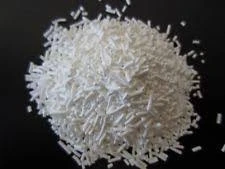
sulfur dioxide food preservative
The Role of Sulfur Dioxide as a Food Preservative
Sulfur dioxide (SO₂) is a chemical compound that has been widely used as a food preservative for centuries. Known for its antimicrobial and antioxidant properties, it helps to enhance the shelf life and safety of various food products. Its application in the food industry is particularly prevalent in the preservation of dried fruits, wines, and certain vegetable products. Understanding the benefits, uses, and potential concerns associated with sulfur dioxide can shed light on its crucial role in food preservation.
Historical Context of Sulfur Dioxide
The use of sulfur dioxide as a food preservative dates back to ancient times. Ancient Romans used it to preserve wine, while in the Middle Ages, it was employed to prevent the spoilage of various foods. The compound works primarily by inhibiting the growth of bacteria and yeasts, preventing oxidative spoilage, and retaining the color and freshness of food products. Over the years, its popularity has only increased, and today it is considered a vital component in the food preservation arsenal.
Mechanism of Action
Sulfur dioxide acts through several mechanisms. Firstly, it possesses potent antimicrobial properties that can inhibit the growth of a wide variety of bacteria and fungi. This is especially important in products that are prone to spoilage, like dried fruits, which might otherwise require chemical preservatives or refrigeration. Secondly, SO₂ serves as an antioxidant, preventing oxidation reactions that can degrade food quality and alter flavors. This dual action makes it highly effective in maintaining the freshness and palatability of food products.
Common Applications
sulfur dioxide food preservative

Sulfur dioxide is commonly found in the preservation of dried fruits such as apricots, raisins, and prunes. When applied to these foods, it helps retain their color, flavor, and moisture content. Furthermore, SO₂ is essential in winemaking, where it helps prevent spoilage and oxidation during fermentation and storage. It is also used in the preservation of some vegetable products like pickled vegetables, where it helps retain their crispness and vibrant colors. Moreover, sulfur dioxide can be found in certain processed foods, beverages, and bakery products.
Regulatory Guidelines
Due to its widespread use, sulfur dioxide is subject to regulatory guidelines across different countries. For instance, the U.S. Food and Drug Administration (FDA) and the European Food Safety Authority (EFSA) have established specific limits on the maximum allowable levels of SO₂ in food products. These regulations are crucial to ensure consumer safety, as excessive consumption of sulfur dioxide can lead to adverse health effects.
Health Concerns
While sulfur dioxide is generally recognized as safe when used in regulated amounts, it can pose risks for certain individuals, particularly those with asthma or sulfite sensitivities. Symptoms might include respiratory issues, allergic reactions, or gastrointestinal disturbances. As a result, it is vital for food manufacturers to label products containing sulfur dioxide clearly, enabling consumers with sensitivities to make informed choices.
Conclusion
Sulfur dioxide has established itself as an indispensable food preservative with a rich history and numerous applications. Its ability to inhibit microbial growth and preserve food quality makes it a popular choice among food manufacturers. However, potential health concerns necessitate careful regulation and transparent labeling. As consumers become increasingly health-conscious, understanding the role and implications of sulfur dioxide in food preservation is essential for making informed dietary choices. With continued research and advancements in food preservation techniques, the balance between safety and effectiveness in using sulfur dioxide will remain a pivotal focus in the food industry.
-
Understanding Synthetic Rubber OptionsNewsApr.27,2025
-
Trichloroisocyanuric Acid: Essential for Clean and Safe WaterNewsApr.27,2025
-
Sodium Dichloroisocyanurate: Key to Safe Water TreatmentNewsApr.27,2025
-
Sodium Acid Pyrophosphate: Essential in Modern Food ProcessingNewsApr.27,2025
-
Essential Water Treatment ChemicalsNewsApr.27,2025
-
Denatured Alcohol and Its Industrial UsesNewsApr.27,2025
-
The Versatile Uses of Sodium BicarbonateNewsApr.24,2025
Hebei Tenger Chemical Technology Co., Ltd. focuses on the chemical industry and is committed to the export service of chemical raw materials.
-

view more DiethanolisopropanolamineIn the ever-growing field of chemical solutions, diethanolisopropanolamine (DEIPA) stands out as a versatile and important compound. Due to its unique chemical structure and properties, DEIPA is of interest to various industries including construction, personal care, and agriculture. -

view more TriisopropanolamineTriisopropanolamine (TIPA) alkanol amine substance, is a kind of alcohol amine compound with amino and alcohol hydroxyl, and because of its molecules contains both amino and hydroxyl. -

view more Tetramethyl Thiuram DisulfideTetramethyl thiuram disulfide, also known as TMTD, is a white to light-yellow powder with a distinct sulfur-like odor. It is soluble in organic solvents such as benzene, acetone, and ethyl acetate, making it highly versatile for use in different formulations. TMTD is known for its excellent vulcanization acceleration properties, which makes it a key ingredient in the production of rubber products. Additionally, it acts as an effective fungicide and bactericide, making it valuable in agricultural applications. Its high purity and stability ensure consistent performance, making it a preferred choice for manufacturers across various industries.











